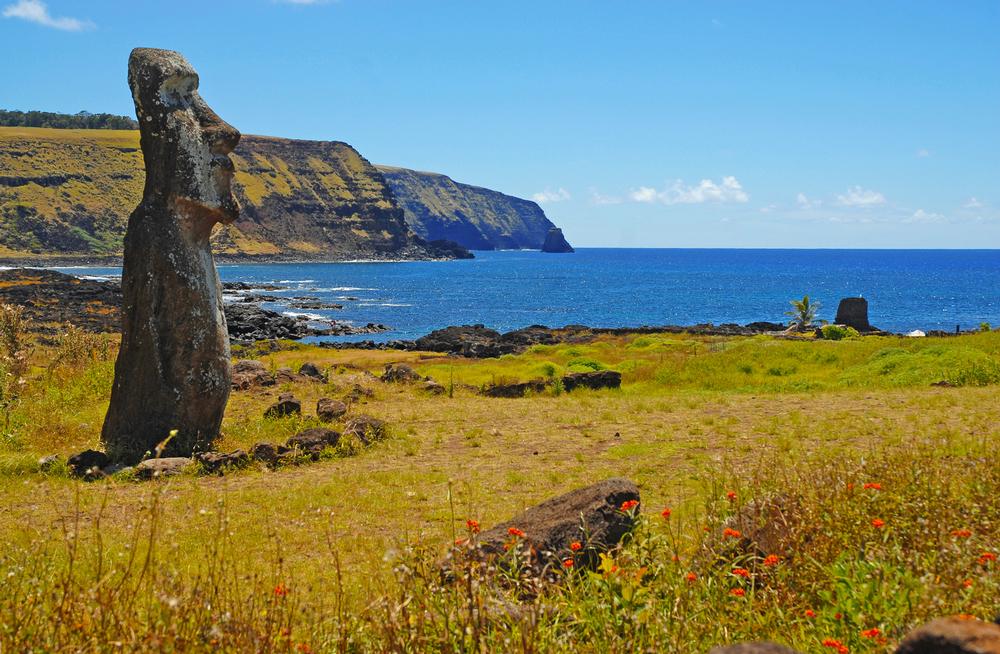- Please support our journalism through affiliate links. Affiliate Disclosure
Review & Frequenly Asked Questions:
In the middle of the Pacific Ocean, 2,300 miles west of South America and 1,100 miles away from any neighboring island, there is a small Polynesian volcanic island called Easter Island, also known by its indigenous name of Rapa Nui, part of Chile. It is a World Heritage Site, famous for its archeological park containing 900 enormous statues known as Moai.
- These statues, which average 13 feet in height and weigh about 14 tons, were created between the 10th and 16th centuries by the early inhabitants of the island.
- These monolithic stone heads are baffling to researchers who cannot figure out why the Rapa Nui people went through such enormous efforts to create them or how they carved them with primitive tools.
- Another lingering question is what happened to the Rapa Nui people? Rapa Nui’s early inhabitants came from other Polynesian island to this one to build a unique culture away from any influences.
- One theory is that they may have built these statues to honor their ancestors but had to leave once they had completely depleted the island resources.
- Once a thriving culture, Rapa Nui is today almost barren, with no trees and most of its soil being washed away in erosion. All that is left are these enormous monuments as a reminder of human achievement and resilience.
Rating: ⭐⭐⭐⭐⭐
Plan Your Trip
Get Ready to Go!
- Search flights and stays nearby.
- Book your tour or local activity.
- Book your car rental.
Need some more help?
Go to travel reservations.


